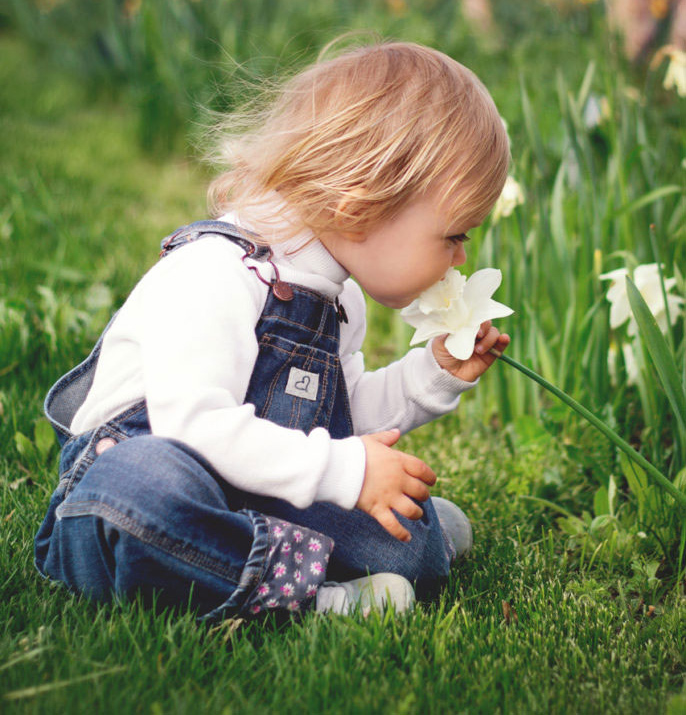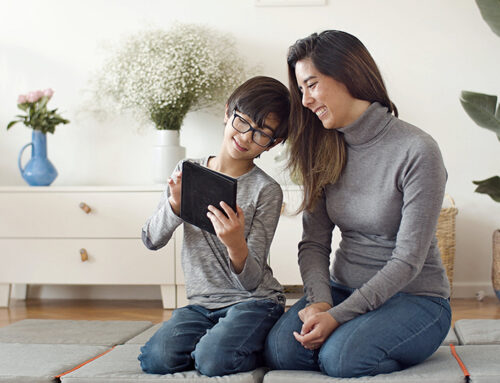Exploring the senses of vision, smell, taste, touch, and hearing allows many opportunities to target language skills. This blog’s purpose is to give tips on how to target language skills while exploring with your senses. Here are some ways for you to develop your child’s vocabulary and sentence structure while learning about how our bodies work to do some amazing things!
- See: Look through picture books that contain scenes, such as I SPY or Can You See What I See? books. Model for your child how to say, “I see ….” You can also ask, “Do you see a …?” If your child is speaking in sentences, you can describe an item by color, size, etc. and see if he/she can guess what you are looking at.
- Smell: When cooking or eating a meal, sniff each ingredient or food. If your child will close his/her eyes, you can have him/her guess what food it is.
- Taste: While eating a meal or snack, provide your child with some opposite words to describe how the food tastes. Examples include: salty vs. sweet vs. sour, spicy vs. not spicy, hot vs. cold.
- Touch: Explore the textures in your home. Have your child feel a few smooth items (e.g., table, ball) and then have him/her feel some bumpy/rough items (e.g., woven dishtowel, bottom of a shoe). You can use textures to teach the concepts of same and different (e.g., “These feel the same, but these feel different.”).
- Hear: Search the internet for audio or video clips of different sounds (e.g., animal noises, vehicle sounds, instruments). Play the sound for your child without letting him/her see what it is. Have him/her guess what is making the sound by saying “I hear a …” You can also search google for “animal sounds” and find some neat ones there!
There are a number of books written about the five senses, which can further help expose your child to new vocabulary covered during their exploration of the senses. You can use the sentence stem “I use my ___ to ___” to review what your child has learned. You can expand on what you have learned about the body parts used for the five senses (eyes, ears, tongues, hands, and noses) by talking about more body parts. For example, you might talk about why we use our feet, our brains, our arms, or our lips. Happy exploring!



Blue Bird Day fosters socialization, sensory regulation, and pre-academic learning in children ages 2-7 years in therapeutic rotations that simulate preschool and kindergarten settings. Our compassionate therapists practice a relationship-based and family-centered approach, provide parent training, and collaborate on goals and individualized intensive treatment plans for your child.
We believe in a collaborative and multi-disciplinary team approach to therapy. A team of occupational therapists, speech-language pathologists, dietitians, developmental therapists, behavioral therapists, physical therapists, and therapeutic assistants are created for each child to ensure child and family are fully supported and the best possible results are achieved.
Options for individualized, group and virtual therapy sessions are available as well.
Want to learn more or you have a specific question? Feel free to connect with us here!



